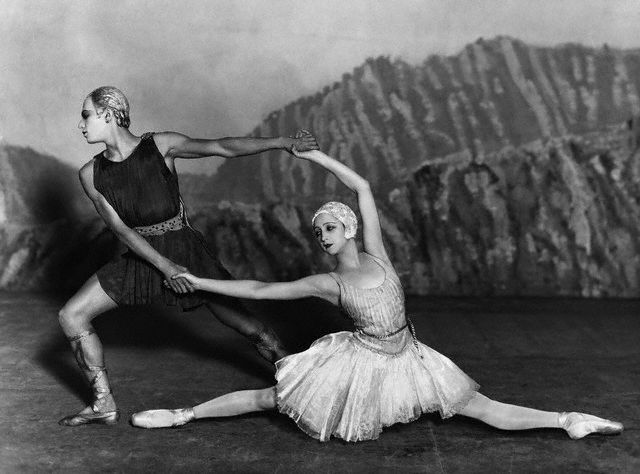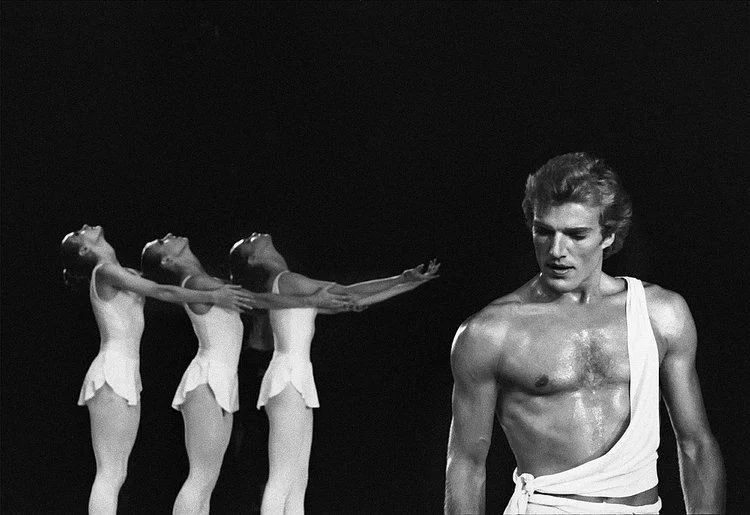Le Corsaire – revisited (Vienna State Ballet, May 17th, 2019)
One of the most interesting things about my job and occupation is the possibility to witness different casts in ballets which I have seen many times before. These are enriching and very rewarding experiences that sometimes even make you look back in order to respect and cherish even more performances that you have seen in the past. On this particular case, I could not have been more fortunate. A wonderful cast – including four débuts in principal roles.
The „chemistry“ between the odalisques played by Elena Bottaro, Anita Manolova and Rikako Shibamoto did not quite work out – neither emotionally nor on a technical level. I missed a kind of intellectual approach between them. It was as if they did not belong together, like they were dancing on their own, just for themselves. No interacting.
Copyright: Vienna State Ballet / Ashley Taylor
Sveva Gargiulo's début as Zulméa and Richard Szabó as Birbanto were next to perfection, technically. Especially his performance. But both were a bit too one-dimensional or as we'd say in Brazil „a bit too green“ (comparing people to fruits that are picked up before ripening) – there is still lots of work to be made about portraying characters and, specially PROJECTING them into this huge edifice. Not an easy task. I, particularly, would have used Mr Szabó in another cast – one in which Conrad would not have been played/danced by such a tall dancer. Considering Birbanto's threatening character the height difference was a bit too uncomfortable, unbelievable to watch. But this is a question of casting and has nothing to do with Mr Szabó's skills as a dancer.
Eno Peçi... it'd be not right to exercise some sort of critic or comment about a dancer that KNOWS what he is doing on stage. An Artist who projects his persona, the character he is playing up to the last row in the gallery. A complete professional. It is such a pleasure to be able to see him on stage.
Dumitru Taran's début as Lanquedem. A most welcome idea and perfect casting. Technically „intact“, Mr Taran manages to grow as an artist from performance to performance. He combines some elements that are very fortunate when put together: clean technique, height, emotional intelligence in projecting his characters, good (classical) looks and a complete understanding about what he is doing.
This was the second or third time that I could witness Kiyoka Hashimoto as Gulnare, She is the kind of dancer you dot worry about. You just sit back, relax and „put your feet up“ to enjoy what you're going to watch. Phantastic. And so flexible and versatile in her interpretations. Miss Hashimoto always impresses me. Also in tiny things that no one pays attention to... But next time you see her on stage, don't pay that much attention to her most exciting jumps, pirouettes and extension but just try to feel her simple pas de bourrées in combination with the unique way in which she portrays her épaulement. Yes, unique! And that is exactly where dancing starts: in the most simple of movements... And in the most simple of reactions. Like picking up a flower from the floor so other dancers would not step on it (and hurt themselves), letting it fall and picking it up again – a principal's reaction that made her even more endearing to the audience. A lovely character.
Jakob Feyferlik's début as Conrad was no surprise for me. I had awaited this for quite some time. I cannot stop saying how much I appreciate his promotion to a Principal. Many people criticized Manuel Legris for promoting such a young dancer, forgetting that many of the principal dancers in this and other companies today, were also promoted in such an early age. You can only create great careers if you invest in them. I could go on and „recite an ode“ to Mr Feyferlik's technical accomplishments (his clean technique, his jumps, quich batteries, his precision, his turns, strength during manéges, his looks, his WONDERFUL partnership skills etc.etc.etc.) but I just want to refer today to something that is far more important than anything – and which I have referred to while writing about Dumitru Taran: emotional intelligence... yes, and that makes all the difference. It is a privilege to be able to accompany such a career's development – in such a short time.
Last but not least. Olga Esina's Médora... I have seen many Médoras here and in many productions of „Le Corsaire“ all over the world (including a very questionable and strange performance of Julie Kent with the ABT, that I certainly will never forget) but her „reading“ of the character is, for me, the most perfect and complete I have ever seen. Hers is not an „interpretation“ of Médora. She IS the character and she gives it other qualities – like a certain „earnestness“ that I had never seen before. She is an intelligent Médora and she does not „imitate“ despair. She lives through it. She survives it. And all this fascinating process that we were lucky enough to witness in just a few hours, was accompanied by such a pinpointed, precise technique. And such a „classy one“ by the way: No vulgar over extensions, no displays of “extreme technique” and an extremely elegant, classical épaulement.
At the very minute of her entrance, she caught the audience's attention and kept it until the (many) curtain calls. She went even through difficult times during the performance – I had never heard such quick conducting as Mr Ovsyanikov's – especially during her fouettés in the second act. It was nearly frightening and surely not easy for her.
I was lucky enough to be able to share my thoughts during the intermissions with a publisher friend from New York, a great Ballet Connoisseur, Mr Andrew Wentink. His simple words after watching Miss Esina's performance were: „I had a favourite dancer. Maria Karowski from the NYC Ballet. Now I have two!“. And just to settle matters straight: This intelligent man KNOWS what he is talking about.
No more words.
It'd be a sacrilege to comment more on such a perfect performance as Miss Esina's and Mr Feyferlik's. Words are not strong enough to express what we've seen.
But that is dance, isn't it? Otherwise, it'd be called „literature“!










